You found no, the planets are running on the same plane, why is this?
Author:Astronomy online Time:2022.09.17
Early order of the galaxy
Historical traceability of the balance of the solar system
To answer this question, we must go back to the past.
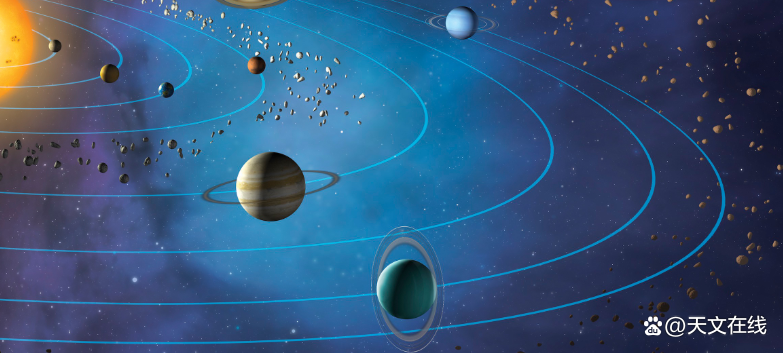
The planets running around the sun (from the inside to the outside): Mercury, Venus, Earth, Mars, Jupiter, Saturn, Heavenly Star and Neptune. (Picture source: Getty Picture Club, Science Gallery/Mark Galik)
If you have observed the model of the solar system, you may notice that the sun, planets, satellites, and asteroids are roughly on the same plane. But why?

To answer this question, we must go back to the beginning of the birth of the solar system, about 4.5 billion years ago.
The astronomer Nader Hash Poole, a astronomer at the University of Hawaii, told Life Science that the solar system was just a huge, rotating dust and gas cloud. The diameter of this huge cloud is 12,000 astronomical units (AU); 1 AU is the average distance between the earth and the sun, about 93 million miles (150 million kilometers). Hashipur said that this cloud became so big that although it was full of dust and gas molecules, the cloud itself began to collapse under its own quality.
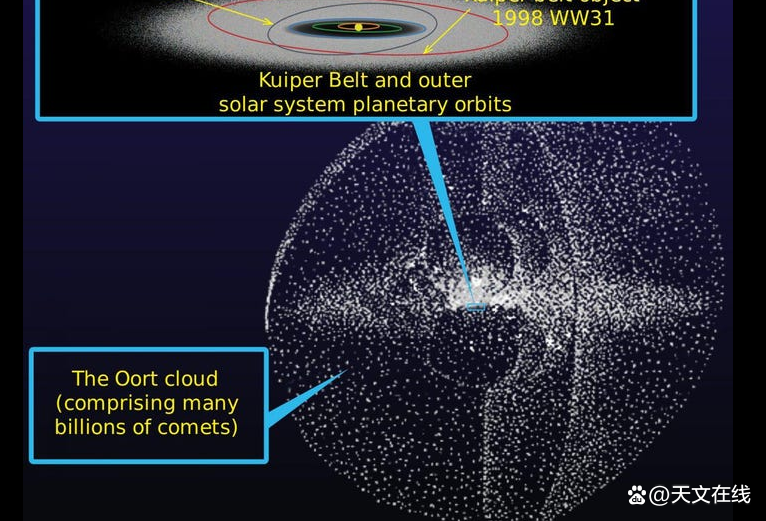
As rotating dust and gas clouds began to collapse, it gradually tied. Imagine that a pizza master threw a rotating dough in the air. The dough rotates one side to swell, becoming thinner and flatter. This is the early solar system.
At the same time, in the center of the constant flat cloud group, all the gas molecules were squeezed together, and they were heated, Hashpple said. Under huge calories and pressure, hydrogen atoms and 氦 Atoms (opened new labels) fused and started a billions of years of nuclear reactions, forming a new star: the sun. In the next 50 million years, the sun continued to grow, gathered from the surrounding gases and dust, and emitted strong calories and radiation waves. Slowly, the sun that has increased the sun is clearing the vast space around.
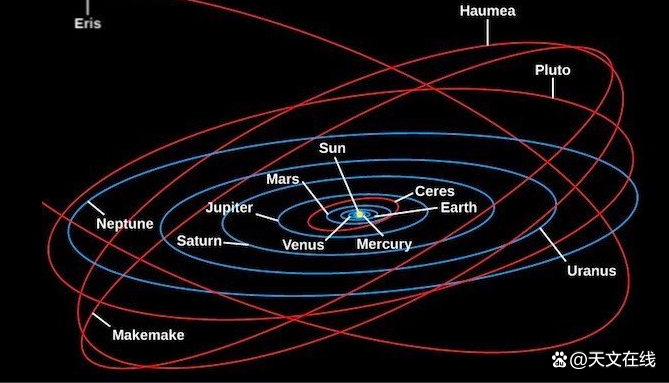
As the sun grows, the clouds continue to collapse, forming "a gas -shaped disc that surrounds the stars, it becomes more and more flat, and the sun is constantly expanding," Hashpple said.
In the end, the nebula became a flat structure, known as the original star plate, running around the young star. Hashipur said that the disc is across hundreds of astronomical units, and the thickness is only one tenth of this distance.
In the following tens of millions of years, the dust particles in the original planets rotated slowly, and occasionally collided with each other, and even the particles were sticking together. After millions of years, these particles have become particles with diameter of millimeters, and these pieces have become cobbled cobblestone with longmi, and these pebbles continue to collide and stick together.
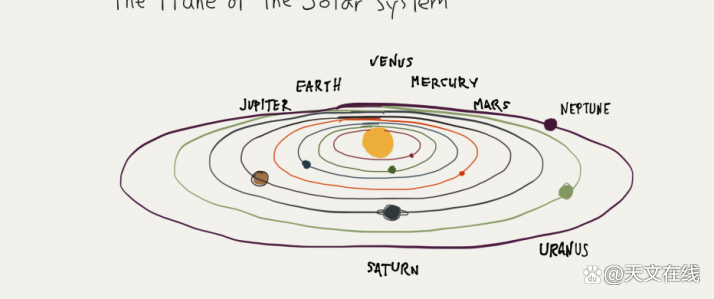
In the end, most of the substances in the original planets stick together, forming huge objects. Some of these celestial bodies have become so large, forming spherical planets, dwarf planets and satellites under the influence of gravity. The shapes of other objects are not very regular, such as asteroids, comets and some small satellites.
Although the size of these objects is different, they stay on the same plane. This is the birthplace of their birth. Even today, the eight major planets of the solar system and other celestial bodies are still at the same level.

related information
The formation and evolution of the solar system began with a small gravity collapse of a small block of a huge element cloud 4.6 billion years ago. Most of the collapsed quality is concentrated in the center, forming the sun, and the rest of the stalls and forming a original planet disk, which in turn forms the planet, satellite, meteorite and other small solar celestial systems. This is known as the extensive acceptance model of Nebula hypothesis, and was first proposed by Emmanuel Sweden, Emmanuel Kant, and Marquis Pesay Simon, 18th-century.
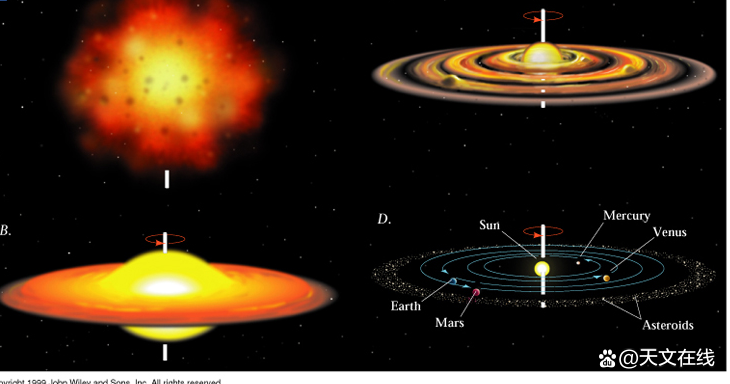
The subsequent development is intertwined with various scientific fields such as astronomy, physics, geology, and planets. Since the advent of the space era in the 1950s and the discovery of the exterior planet of the solar system in the 1990s, this model was challenged and further improved in the process of explaining the new discovery. Since the beginning of formation, the solar system has undergone considerable changes. There are many satellites formed in the astrolabe that surrounds its mother star gas and dust. Other satellites are believed to be captured, or from huge collisions (the earth's satellite lunar goal is the situation).
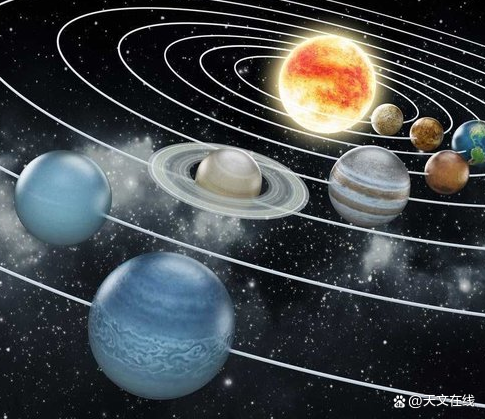
The collisions between celestial bodies have continued to occur and the center of the evolution of the solar system. The position of the planet is often migrated, and some planets are already easy to be in place [1]. Such planet migration is now considered to have a burden on the early evolution of the solar system. Just like the birth of the sun and the planet, they will eventually perish.
About 5 billion years later, the sun would cool down and expand outward more than the current diameter (becoming a red superstar), throwing off its outer layer to become a planet -like nebula, leaving a star wreckage called the white dwarf. In the distant future, the surround planet of the sun will gradually be rolled away by the stars that pass by. Some of them will be destroyed, and others will be thrown into the interstellar space. In the end, after trillions of years, the sun will eventually be alone, and there are no other celestial bodies on the orbit of the solar system [2].
By: Joanna Wendel
Fy: jane
If there is related content infringement, please contact the author to delete after the work is released
Reprinted, please obtain authorization, and pay attention to maintaining integrity and indicating the source
- END -
Heavy!Alipay China changes coaches!The new "head" was a programmer ...

Recently, it is reported that the legal representative and chairman of Alipay (Chi...
From black and white to color, Harbin Institute of Technology takes you to appreciate the beauty of the micro -world!

Beauty, everywhereAs long as you have the eyes that are good at discoveringHave yo...